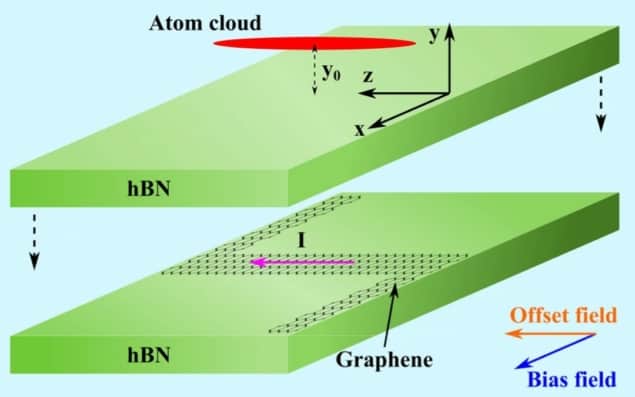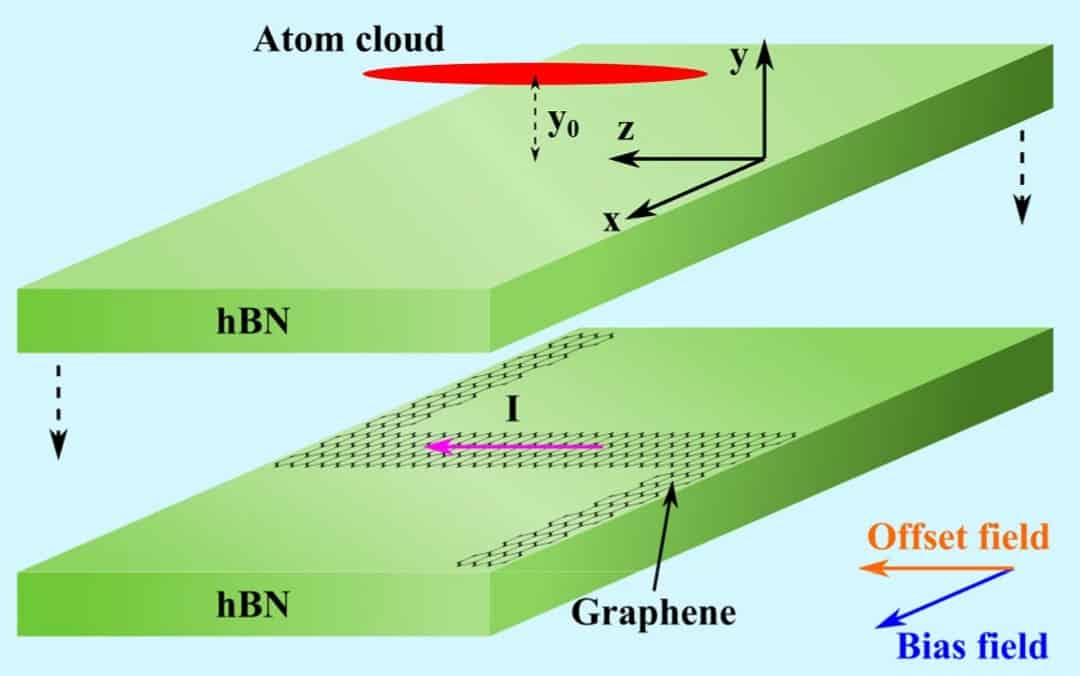 Mark Fromhold at the University of Nottingham, the team showed how the move to graphene could significantly reduce electronic noise in the conductors while lowering the attraction between atoms and chip surfaces.
Mark Fromhold at the University of Nottingham, the team showed how the move to graphene could significantly reduce electronic noise in the conductors while lowering the attraction between atoms and chip surfaces.
Atom chips contain clouds of ultracold atoms that can be used to detect things like acceleration or magnetic fields at a very high sensitivity. They also have other uses including atomic clocks. The atoms are held in a vacuum using magnetic or electric fields and typically hover between 1–100 micron from the inside surfaces of the trap.
In magnetic traps, atoms are held by an inhomogeneous magnetic field created by a copper wire conductor. The wires tend to be about 1 micron in thickness and are mounted on bulky insulating substrates. Unfortunately, using thick wires brings several disadvantages. One is that spatial imperfections within the wires can reduce the quality of the trapping potential. Another is that these wires tend to have high levels of electronic noise, which can induce spontaneous transitions between atomic energy levels. This can result in atoms being ejected from the trap. In addition, the presence of large conductors creates a significant Casimir-Polder force that drives atoms towards chip surfaces, which can lead to further losses. Together, these effects severely limit the length of time that atoms spend in a trap.
Z-shaped graphene
In their theoretical study, Fromhold’s team considered what would happen if the metal wire is replaced with a Z-shaped graphene conductor sandwiched between insulating layers of boron nitride. Compared with copper wires, this structure would contain far fewer atoms and conduction electrons, both lowering its thermal noise and its attraction for trapped atoms.

Ultracold atoms put high-temperature superconductors under the microscope
Through a series of calculations, the researchers showed that these graphene wires would likely be able to trap atoms just a few hundred nanometres from chip surfaces. Furthermore, they predicted that improvements from using graphene could lead to atom chips that can confine atoms for more than 10 s – orders of magnitude longer than the times possible with previous devices.
These improvements would make it easier to form a Bose-Einstein condensate (BEC ) in an atom chip. In a BEC, most of the ultracold atoms are in a single quantum state and BECs have a wide range of potential applications including sensing and fundamental physics experiments.
The research is described in Physical Review A.
